- What is question-based selling?
- How to Use the Question-Based Selling Method
- Question-Based Selling: Pros and Cons
- Is Question-Based Selling Worth It?
What is question-based selling?
Question-based selling is a sales approach that focuses on asking strategic, open-ended questions to uncover a prospect's needs, challenges, and goals. By understanding their pain points through conversation, you can position your product or service as the ideal solution in a natural, collaborative way.
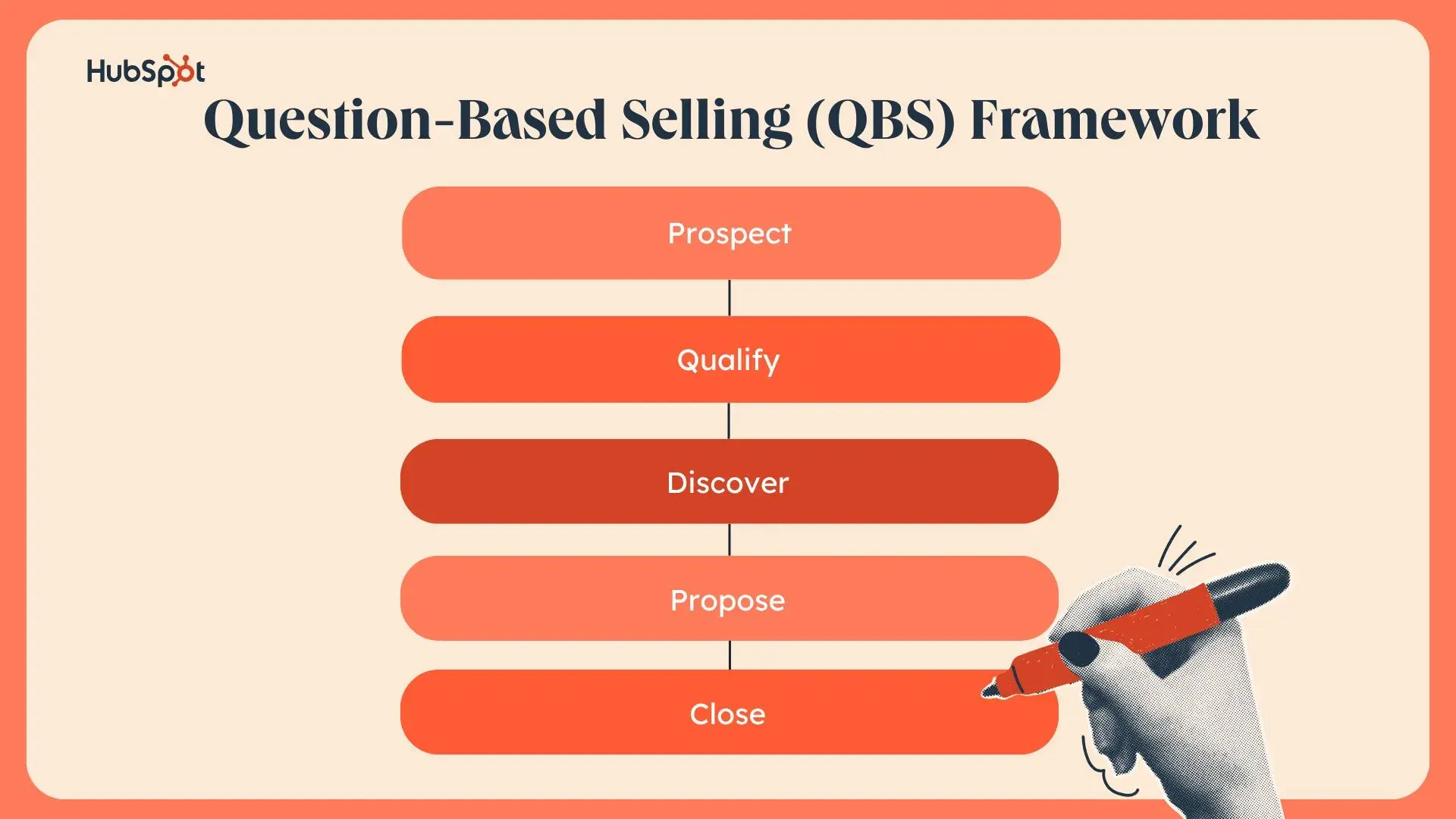
Question-based selling was developed by Thomas Freese, best-selling author, Founder and President of QBS Research Inc., and (you likely already assumed this) a former sales guy. After Thomas first uncovered this unique approach to selling, he exceeded his sales quota by 200%; after many years spent in corporate sales, he transitioned out of the industry and introduced QBS worldwide through his book Secrets of Question-Based Selling.
Following its release, his QBS approach has become a widely recognized and used sales methodology that reps utilize as a common tactic in their sales toolbox. Today, question-based selling remains a go-to framework for fostering meaningful, results-driven conversations and, most importantly, closing deals.
Through my research about question-based selling, I think what salesfolks should see as “worthwhile” about the technique is its straightforward approach to gathering all the essential information needed to close a deal using a purposeful and structured inquiry process.
In the next section, I’ll talk and walk you through how to use QBS on your own, give you a few direct prompts to work with for your next interaction with a prospect, and provide some instructions on adapting the approach to fit different sales scenarios.
How to Use the Question-Based Selling Method
What makes question-based selling effective is how it’s structured. It’s not about winging it or throwing spaghetti at a wall — or a phone? Maybe your computer? — and seeing what sticks. It’s about creating a dialogue that builds trust and produces results that close a deal.
By using question-based selling, salesfolks can:
- Earn credibility more quickly
- Qualify leads faster
- Increase a customer’s sense of urgency
But you need to adjust the approach to fit your sales scenario to get these results. Here’s how to make question-based selling work for you:
1. Ask the right questions.
Not all questions are created equal, and when QBS is involved, the right questions are everything. The goal is to ask open-ended questions and avoid yes/no inquiries or any overly vague prompts. In scenarios when time is of the essence — like a quick discovery call — focus on asking questions that immediately reveal your customer’s information. You can ask things like:
- What industry are you in?
- One of the most common issues we keep hearing about [blank]. Is this an issue for you?
- What are your normal daily tasks so I can better understand how we could help you?
- To what extent does seasonality impact your business?
For more in-depth conversations that happen at later points in the sales cycle (like the qualification/diagnosis or proposal stages), tailor your questions to unveil longer-term goals and deeper motivations. You can ask questions like:
- Can you describe a challenge you’re facing that you hope I/[insert business name] can address?
- What barriers do you face in your attempt to scale your business?
- What resource(s) could you use more of?
- What does an ideal solution look like to you?
2. Pinpoint the right prospect.
No matter how skilled you are at asking the right questions, the wrong prospect won’t yield meaningful results. That’s why targeting is essential. If you’re working with a lengthy sales process (like you would in B2B sales), you’ll want to scope out decision-makers early on; if you’re working with consumer-facing selling, you’ll want to make sure you’re connecting with someone who needs for your product to begin with.
Pro Tip: Think of QBS like this: Who you ask impacts the conversation, and what you ask guides it.
3. Listen actively and respond thoughtfully.
Here’s where many salespeople fall short: they ask great questions but fail to really listen and dissect the answers they receive. Active listening isn’t about just nodding along — it’s about showing genuine interest, asking the right follow-up questions, and reflecting on what the prospect shares with you.
Don’t be afraid to probe deeper, either. QBS is all about building trust with your customer, presenting your solution as the perfect fit for their specific challenges, and demonstrating your commitment to their success.
In the next section, I’ll cover why question-based selling is great but should be considered cautiously. I’ll also share tips to help you out if you decide to give QBS a shot.
Question-Based Selling: Pros and Cons
Don’t get me wrong: question-based selling is awesome. It also does work. However, you should still know what you’re getting into before going at it full-throttle. I compiled a small list of pros and cons that you should know (and thoroughly consider) about QBS. Check it out below:
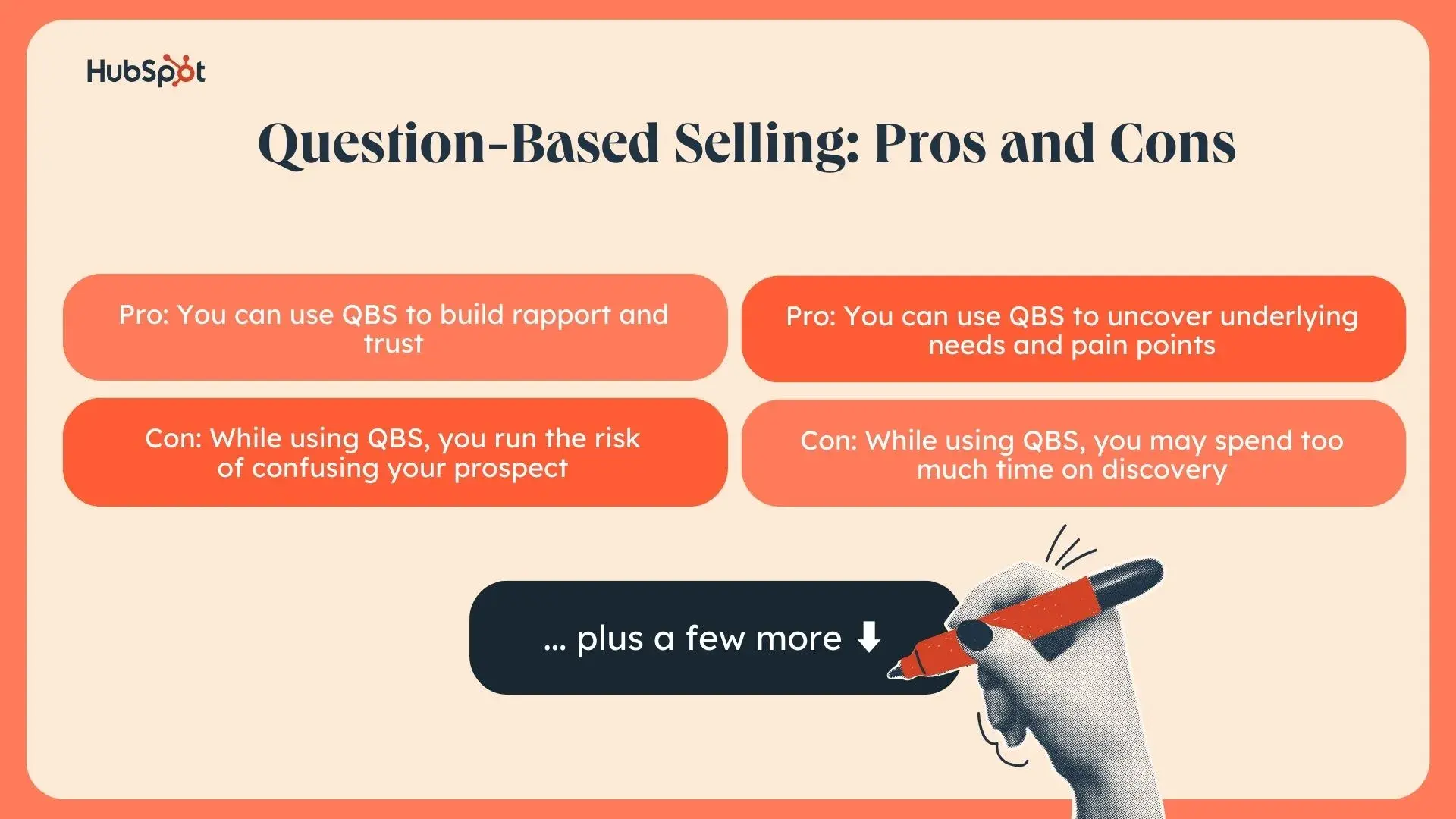
1. Pro #1: You can use QBS to build rapport and trust.
The great part about question-based selling is that it’s designed to evoke insightful customer responses, making it easier to foster a strong relationship with them from the initial discovery stage of your sale.
Although you’ll have to do some heavy lifting on your end (i.e., doing lots of preliminary research on your customer), it’s bound to go a long way and eventually, you’ll begin to disassociate yourself farther away from being “just a salesperson” in the eyes of your prospect.
2. Pro #2: You can use QBS to uncover underlying needs and pain points.
Question-based selling is formulated to enable you to see beyond the surface of your customer’s stated needs or challenges. By asking open-ended, intentional questions, you can guide the conversation purposefully to identify hidden concerns, priorities, or desires that your customer may not have initially recognized.
This element of question-based selling allows you to propose your solution in a way that directly addresses concerns that genuinely matter to them.
3. Pro #3: You can use QBS to encourage emotional buy-in.
One thing that question-based selling can do? Pull some heartstrings. But only when done right.
As you familiarize yourself with the nuances of this sales strategy, you will quickly realize that you can use question-based selling to tap into your customers’ emotions. When you ask the right questions, you help people reflect on what truly matters.
Leveraging this emotional connection goes far, especially as you work your way through the sales cycle.
4. Pro #4: You can use QBS in enterprise-level/B2B sales deals.
Question-based selling works surprisingly well in a complex sales setting. Complex sales are complicated to land, but if you use question-based selling during the discovery and qualification/diagnosis stages of the process, you’re more likely to expedite the journey to a successful outcome.
5. Con #1: While using QBS, you run the risk of confusing your prospect.
Unfortunately, if you’re not careful with question-based selling, things could get complicated before they get easy. If you ask too many questions too quickly or aren’t framed clearly, your prospect will feel overwhelmed or confused. This can also lead to disengagement, as they might not fully understand why you’re asking certain things or what you’re trying to uncover. Plus, I’ll admit it: Nothing’s worse for a salesperson than their prospect getting lost in the sauce.
When using QBS, you’ve got to pace the conversation, ensuring each question serves a clear purpose and builds on the last one, helping guide your prospect without creating unnecessary frustration.
Pro Tip: I recommend using HubSpot’s Sales Qualification Questions Playbook to refine what you ask for and how to do so. This free resource features an array of inquiries covering every stage of the buyer’s journey, from awareness to business impact questions.
6. Con #2: While using QBS, you’ll quickly realize that it’s not super suitable for transactional sales deals.
Question-based selling works in every scenario except a simple one. If you’re selling something like low-cost, one-time products or if you specialize in small-scale service sales, QBS might be a bit over-the-top. Here’s why:
- Transactional sales are often quick and straightforward, so customers aren’t always looking for in-depth conversations about their needs
- Transactional sales focus more on convenience and efficiency rather than building a deep understanding of a customer profile and their pain points
- Transactional sales typically involve less risk, meaning that you don’t have to spend time crafting a customized solution for a customer
In the case of a transactional sale, a more direct, fast-paced approach is much more appropriate. This will save you and the customer time without delving too deep into exploration.
7. Con #3: While using QBS, you may spend too much time on discovery.
Question-based selling could trap you in the discovery phase. You may ask question after question in an attempt to fully understand your prospect’s situation, which isn’t a bad thing … it just might not be worth your time or energy.
While digging deeper is essential, spending too much time on discovery — particularly with a customer who may not be the candidate you’re looking for — can delay the progression of a deal. Thus, striking the right balance between discovery and action is key. Ask enough to get what you need, but know when it’s time to transition into a) providing solutions or b) finding a new prospect altogether.
8. Con #4: QBS requires skill and practice. Trust the time it takes to learn it.
Mastering the art of QBS won’t happen overnight — it’s a skill that requires a whole lot of practice, patience, and trial and error. Thomas Freese probably didn’t get it right on the first try. But don’t let the learning curve discourage you. In the meantime, test out something new daily, perfect your go-to openers, and document everything that works.
The time and effort you invest in honing this approach will pay off in the long run.
Pro Tip: If you want to access a copy of Freese’s Secrets of Question-Based Selling, create an Internet Archive account to borrow this digital version for $0.
Is Question-Based Selling Worth It?
The short answer is yes. Question-based selling is totally worth it, but only if you know how to use it correctly.
QBS can transform your sales conversation from awkward to engaging. This impact is evident when you switch from asking generic questions to strategically unearthing your prospect’s true needs. If you decide to give QBS a try, keep this advice in mind:
- All questions should be thoughtful
- The conversation should be flowing at all times
- Never forget that selling isn’t about you — it’s about the customer. Center them, make them feel heard.
Once you can do this successfully, you’ll close deals without breaking a sweat — or at least not too much sweat.
Sales Methodology
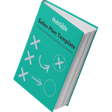
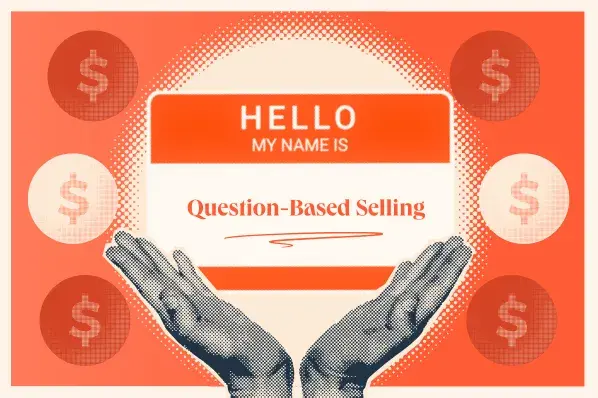
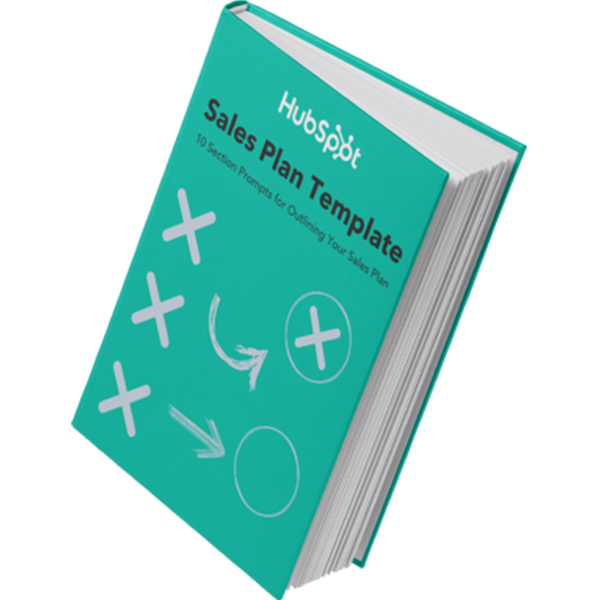



![I Learned How Sales Champions Drive Deals Forward — Here’s What You Should Know [+ Recent Data]](https://53.fs1.hubspotusercontent-na1.net/hubfs/53/sales-champion-1-20250110-9355712-1.webp)
![Decoding Buying Signals in Sales [+ Examples & What I Learned]](https://53.fs1.hubspotusercontent-na1.net/hubfs/53/buying-signals-1-20250501-3647992.webp)



-3.webp)
